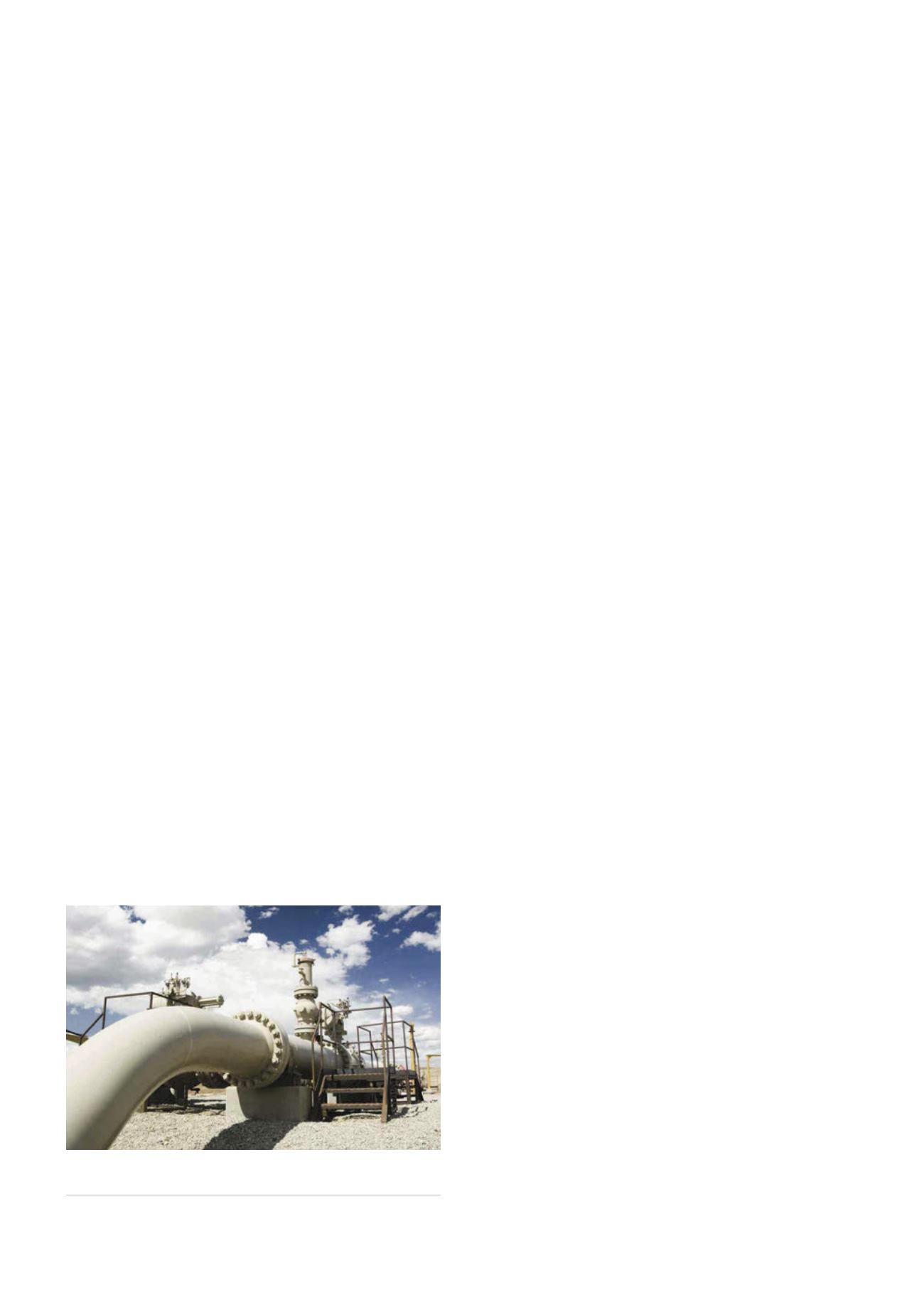
reporting on meter proving, prover certification, transmitter
verification, and test equipment certification in accordance with
American Petroleum Institute (API) guidelines.
Importance of accurate measurements
When it comes to moving oil and gas though pipelines, the
accuracy of flow measurement devices is a top priority –
particularly in the custody transfer (sometimes called ‘fiscal
metering’) process. Ensuring and maintaining precise measurements
is essential for efficient and profitable operations, as well as fair
transactions.
Custody transfer applications involving oil and gas are
influenced by:
)
)
Industry regulations.
)
)
National metrology standards.
)
)
Contractual agreements between custody transfer parties.
)
)
Government regulation and taxation.
Pipeline metering systems must provide a single, accurate
number representing a fiscal measurement. It is important that
this single version of the ‘truth’ is accurately captured, recorded,
and made visible throughout the organisation and among all
the vendors. Due to the high level of precision required in these
applications, metering technologies are subject to approval by
industry organisations, such as the API.
For custody transfer of oil and liquid products, physical
proof testing to assure meter accuracy is essential. Measurement
performance is monitored through the regular inline proving
of meters under actual field conditions, and meters must be
adjusted to accommodate changing process parameters, such as
temperature, flowrate, pressure, density and viscosity. A variety of
proving systems can be used for this task, including ball provers,
small volume provers, bi-directional provers, master meters, tank/
weigh systems, and portable/stationary proving systems.
According to the API Manual of Petroleum Measurement
Standards (MPMS), the purpose of meter proving is to determine
the meter factor. The meter factor is an essential element in
calculating the net standard volume of a receipt or delivery of
petroleum liquids in the supply chain, and is obtained by dividing
the actual volume of liquid passed through the meter during
proving by the volume registered by the proving device.
Meter proving is only part of the compliance puzzle. Prover
certification, transmitter verification and calibration, and test
equipment certification are also required. Through the verification
and auditing of metering systems at every stage of their use, it is
possible to guard against potential meter, instrument or system
problems, while guaranteeing trustworthy data reporting and
full traceability. This trust or lack thereof impacts the image
and reputation of the operating company and can influence the
financial bottom line.
Need to manage proving data
Petroleum producers manipulate vast quantities of meter proving,
transmitter and test equipment calibration, certification and
test data, and many companies rely on manual systems without
automation to support these critical regulatory and business
functions. In many cases, due to a company’s growth through
acquisition there are a variety of work processes and systems
involved. Typical challenges include:
)
)
Variety of data input mechanisms – meter factors and proving
records can be obtained electronically from a supervisory
control and data acquisition (SCADA) system or third party via
PDF document or a scanned, hand-written document.
)
)
Variety of record formats – due to the variety of data sources,
no standard record format or system of record is used.
Therefore, information is not readily accessible and useful
across the organisation.
)
)
Information stored in different locations – information is also
stored on individual employees PCs, on webservers and on file
servers, making it difficult to find and access the required data.
)
)
Formal scheduling and tracking process – most companies rely
on manual scheduling and tracking and do not have a formal
system to track when tests and calibrations were performed.
Proving test schedules are also dynamic based on the change
of products and percent change in meter factors, which also
complicates the scheduling process.
)
)
Detecting system anomalies and potential failures – without
a central repository, and historical records there is no
mechanism to monitor performance data. Without these, it is
impossible to detect degrading meters, transmitters and other
potential equipment problems.
For pipeline businesses of all sizes, manual data collection,
consolidation and reporting efforts are costly and time-
consuming. Manual audit report generation and data entry
frequently results in labour inefficiencies, as well as data quality
and transcription errors, missed scheduled provings, overlooked
prover anomalies, and lost or missed records. These problems
contribute to a lack of regulatory compliance, which can lead to
fines, lawsuits and shutdowns.
Pipeline operators require a robust solution to consolidate
information to respond to audits in a timely manner and meet
various contractual obligations. They also need tools to centralise
Figure 2.
Pipeline metering systems must provide a single,
accurate number representing a fiscal measurement.
70
World Pipelines
/
FEBRUARY 2016


